Advertisements
Advertisements
Question
In the figure given below, LM = LN; angle PLN = 110o.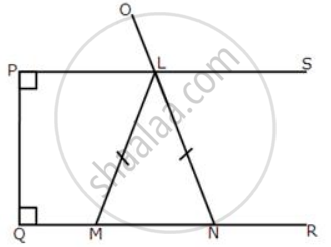
calculate: (i) ∠LMN
(ii) ∠MLN
Solution
Given: ∠PLN = 110°
(i) We know that the sum of the measure of all the angles of a quadrilateral is 360°.
In quad. PQNL,
∠QPL + ∠PLN + ∠LNQ + ∠NQP = 360°
⇒ 90° + 110° + ∠LNQ + 90° = 360°
⇒ ∠LNQ = 360° − 290°
⇒ ∠LNQ = 70°
⇒ ∠LNM = 70° ........(i)
In ΔLMN,
LM = LN ........( Given )
∴ ∠LNM = ∠LMN ....... [angles opp. to equal sides are equal]
⇒ ∠LMN = 70° ....(ii) [ from(i) ]
(ii) In ΔLMN,
∠LMN + ∠LNM+ ∠MLN = 180°
But ∠LNM= ∠LMN = 70° .....[ From(i) and (ii)]
∴ 70° + 70° + MLN = 180°
⇒ ∠MLN = 180°− 140°
⇒ ∠MLN = 40°
APPEARS IN
RELATED QUESTIONS
An isosceles triangle ABC has AC = BC. CD bisects AB at D and ∠CAB = 55°.
Find:
- ∠DCB
- ∠CBD
Calculate x :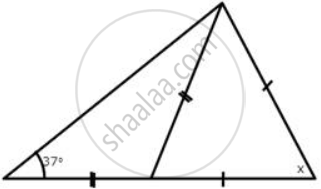
Calculate x :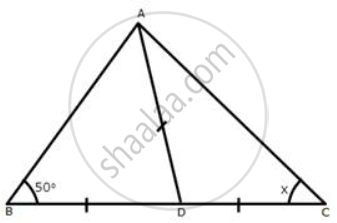
In the given figure; AB = BC and AD = EC.
Prove that: BD = BE.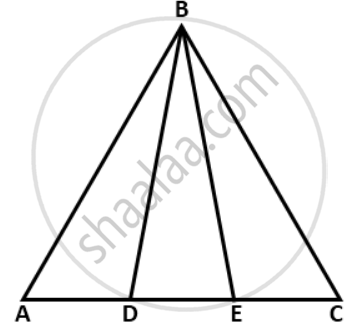
In the given figure, AD = AB = AC, BD is parallel to CA and angle ACB = 65°. Find angle DAC.

Using the information given of the following figure, find the values of a and b.
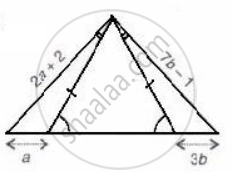
If the equal sides of an isosceles triangle are produced, prove that the exterior angles so formed are obtuse and equal.
In isosceles triangle ABC, AB = AC. The side BA is produced to D such that BA = AD.
Prove that: ∠BCD = 90°
Prove that the medians corresponding to equal sides of an isosceles triangle are equal.
The bisectors of the equal angles B and C of an isosceles triangle ABC meet at O. Prove that AO bisects angle A.
